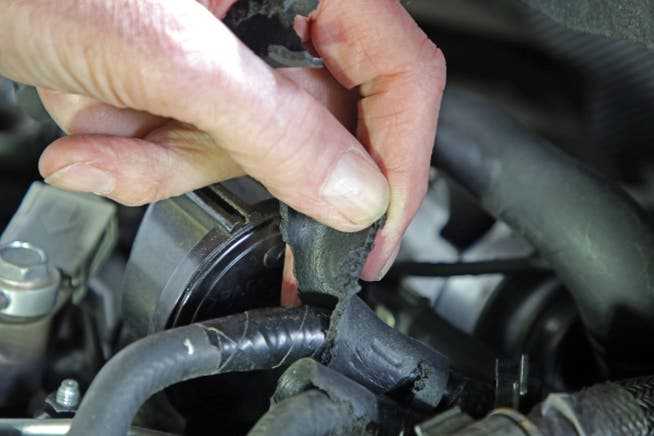According to a projection by AXA Switzerland, the rodents cause 40 million Swiss francs in damage every year. Mobile homes are particularly popular as a bite paradise.
Beech martens often mark their territory with their bite attacks on hoses in the car engine compartment.
Many car owners believe that the problem of bitten brake lines or eroded insulating mats is a thing of the past, and that martens have been banned by modern vehicle construction. Wrong thought.
As AXA Switzerland reports, the insurance company receives an average of 17,000 reports of marten damage every year, which results in a loss sum of 8 million francs per year. AXA estimates that the martens’ desire to chew on hoses or eat insulation material should amount to around 40 million francs throughout Switzerland. The most important answers to marten damage.
Which vehicles are affected?
Cars parked outside overnight are a popular target for martens, particularly during the months of May and June when their territorial behavior is at its peak. To the chagrin of vehicle owners, it is in the nature of animals to chew on cables and hoses, especially when plasticizers are used to make them flexible. In addition, the engine compartment of a car offers the martens an ideal hiding place.

Car damage caused by martens biting hoses from a vehicle engine can pose a safety risk.
Martens particularly like to tamper with mobile homes. “Our figures show that camper vans suffer marten damage twice as often as passenger cars,” says Fredy Egg, Head of Claims at AXA Switzerland. “This has to do with the fact that they stay in the same place for a long time, which makes it easier for the animals to nest. In addition, mobile homes are often parked in areas accessible to martens.” While 378 mobile homes damaged by martens were reported in 2017, there were 532 cases last year. The reason for this increase is likely to be the boom in mobile homes, which was further intensified by the corona pandemic.
How much does the repair cost?
According to AXA Switzerland, marten damage costs around 460 francs on average. Although the amount of damage is manageable, it is still annoying when the car no longer starts or an accident is imminent due to a bitten brake hose.
How do you recognize the marten infestation in the car?
In most cases you can guess whether one of the agile rodents has tampered with a car. Paw marks on body parts, which are larger than those of cats, are conspicuous. As a rule, the marten’s first “reconnaissance tour” goes to the antenna on the car roof. If it is still a radio antenna made of rubber, there will be bite marks that almost always come from a marten.
Another indication are the other traces. Unlike cats, martens often slide from the roof over the windshield of the car to the front hood. The next point of interest is then usually the engine compartment. Here you will usually find rubber hoses for lambda probes, brakes and other units as well as plenty of insulating material to seal off engine noise. However, a quick look under the bonnet does not always provide an overview of any bite damage.
Which regions are affected?
An evaluation by AXA Switzerland over the past five years shows that the probability of marten damage in the cantons of Jura, Glarus, Thurgau or Schaffhausen is up to 80 percent higher than the Swiss average. “Beech marten, the most common species of marten in Central Europe, only occurs at medium altitudes in Switzerland. There are therefore far fewer animals living in a mountainous canton than at lower altitudes,” explains Fredy Egg.
How can the vehicle protect against marten damage?
If possible, drivers should avoid parking in the open air. “Closed garages still offer the best protection against marten damage,” says Fredy Egg. Blocking access to the engine compartment or securing particularly vulnerable car parts can also help. If marten damage does occur, this is covered by fully comprehensive or partially comprehensive insurance. This includes, in particular, bite damage and consequential damage.
Some vehicle manufacturers offer marten traps as additional equipment. With so-called “marten frights” the animals are driven away with an ultrasonic sound without being harmed. Special tubes made of flexible hard plastic without a plasticizer content can protect cables and hoses.
If possible, the car should be parked in a protected area. If there is no garage, it is worth always leaving the car in the same place. This minimizes the risk of rival animals biting and damaging cables in a dispute over the engine compartment.
Wire mesh on the floor under the engine compartment can provide good protection as martens don’t like shaky ground. However, the protection can decrease once the martens have gotten used to the grid.
It is worth having the engine washed regularly to remove the scents of animals that have invaded and thus avoid territorial wars.
